#14: Tests, moving to a new home, and more tests
4 June 2018
In the last year, the James Webb Space Telescope (JWST) and in particular the telescope and the instruments have passed some key milestones on their road towards launch, now planned for 2020.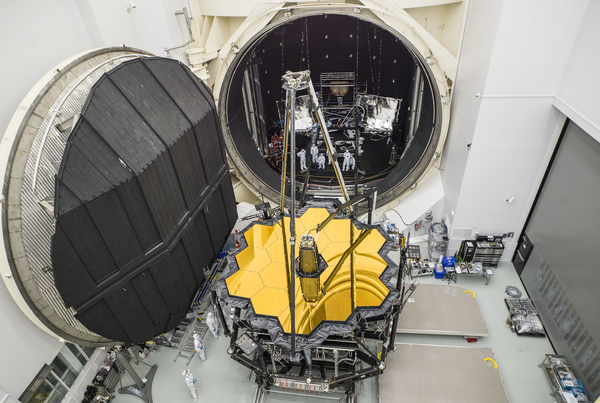 |
| James Webb Space Telescope emerging from Chamber A. Credit: NASA/Chris Gunn |
The first landmark was the completion of four-month long cryogenic tests in the giant thermal vacuum chamber, known as Chamber A, at NASA's Johnson Space Center in Houston, Texas. There, JWST's optical telescope and integrated science instrument module (OTIS) underwent a series of tests designed to check that the telescope and its four scientific instruments functioned as expected in an extremely cold, airless environment, similar to the conditions they will experience in space.
On 27 September 2017, after confirming that OTIS can survive and operate flawlessly in temperatures of approximately 40 Kelvin (-233 degrees Celsius), engineers began to gradually warm the chamber. This was a very precise operation that required extreme caution in order to avoid contaminating the optical equipment or generating mechanical stresses that could damage the instruments or other JWST hardware.
Once the thermal conditions inside the chamber returned to near room temperature, a final set of functional tests was performed under vacuum conditions. These tests confirmed that the warm-up procedure and OTIS cold testing had not caused any issue with respect to the functionality of the instruments and telescope. After this, the vacuum was slowly counteracted by pumping extra-clean air back into the chamber.
The 40-ton chamber door was unsealed on 18 November, marking the successful completion of the cryogenic testing, and OTIS finally emerged from Chamber A on 1 December, after some 100 days shut inside the cavernous vault.
A closer look at NIRSpec: microshutters and detectors
After analysis of the data collected during the OTIS cryogenic test campaign, the team responsible for the European Near InfraRed Spectrograph (NIRSpec) confirmed that the instrument had operated very well and that its performance had not been impacted negatively, despite the intensive OTIS test campaign.
The NIRSpec team was particularly pleased that the instrument's Micro Shutter Assembly (MSA), which comprises approximately 250 000 minuscule 'doors' that enable its Multi-Object Spectrograph capabilities, was in good health, having survived the earlier severe vibration and acoustic testing of OTIS. The performance of the microshutters, which are extremely delicate and can be susceptible to the strong acoustic stresses, could only be verified fully in cryogenic conditions.
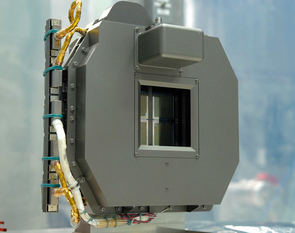 |
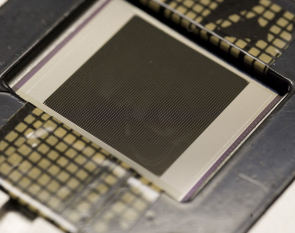 |
| The NIRSpec instrument micro shutters – front view. Credit: NASA | The NIRSpec instrument micro shutters – rear view. Credit: NASA |
During testing, ESA scientists also commanded the instrument to mimic scientific operations in space and acquired samples of data to verify the spectrograph performance. The testing of OTIS demonstrated that the NIRSpec optics are very stable and ready to withstand the harsh conditions of launch.
As for the detectors, their performance was confirmed to be "exquisite". Calibration images were acquired during OTIS testing while operating in NIRSpec Multi-Object Spectrographic (MOS) mode, which will allow astronomers to obtain spectra of more than 100 sources simultaneously. A typical calibration image shows many spectra recorded by the NIRSpec detectors and obtained by commanding selected microshutters open, with illumination provided using one of the instrument's internal calibration lamps.
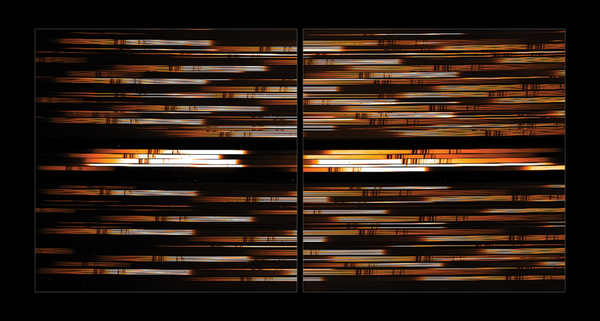 |
| NIRSpec calibration image. Credit: ESA / SOT team |
Calibration images were also acquired when operating the instrument in the Integral Field Unit (IFU) Spectroscopy mode, which will be used to acquire spectra of extended sources.
OTIS in the spotlight
During the OTIS test campaign, the telescope and the instrument module were tested together at their operating temperature for the first time. To take advantage of that, a long suite of tests was performed using dedicated light sources that were temporarily mounted on OTIS.
These sources, called Aft Optical System Plate Assembly (ASPA) optical stimuli, are used to send a variety of light beams onto the telescope and instrument optics in order to perform true end-to-end testing of the full JWST optical system, something that had not been done before.
The resulting images and spectra obtained using all four of the Webb's instruments matched remarkably well with the expectations from computer simulations that had been performed several years prior to the actual OTIS test campaign.
Another set of entirely different measurements also took place in the chamber to assess the stability of the OTIS hardware. Three very high-resolution camera systems, equipped with specially designed flash lamps and mounted on gigantic 3.4 metre-long rotating booms, were used to take multiple photographs of OTIS, tracking the position of hundreds of little reflective targets installed on the OTIS hardware.
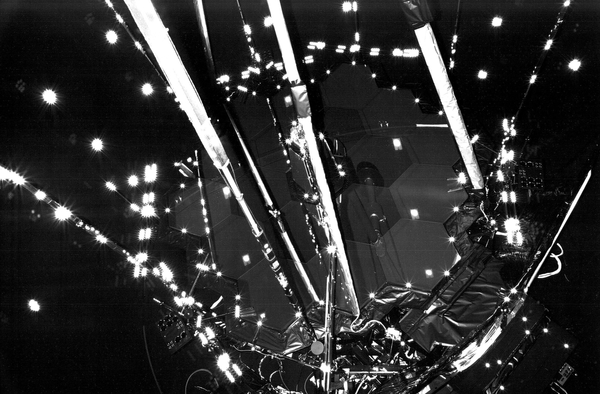 |
| James Webb Space Telescope inside Chamber A. Credit: NASA/Chris Gunn |
This technique, called photogrammetry, was instrumental to measure the miniscule movements and shrinkage of the hardware during the cool down. By doing so, engineers were able to measure positions with an accuracy of only a few tens of microns across the full extent of OTIS, which spans several metres.
Finally a set of tests was conducted to check that a particular optical path, known as the "rogue path", was blocked. Unlike the NASA/ESA Hubble Space Telescope, which is equipped with a tube, JWST has an open, tubeless telescope design, so extra effort has to be spent to make sure that stray light cannot reach its detectors.
This check was conducted using a third set of special light sources, consisting of arrays of LEDs arranged around the perimeter of the primary mirror. The procedure confirmed that this stray light path is properly blocked.
After the warm-up inside Chamber A was completed, the actuators for the telescope's primary mirror segment were functionally tested before all 18 of the mirror segments were stowed. This cleared the way for the transportation of OTIS from Houston to Northrop Grumman Aerospace Systems in Redondo Beach, California, at the beginning of 2018.
Moving to a new home and further testing
For this journey, it was placed inside a specially designed shipping container called the Space Telescope Transporter for Air, Road and Sea, or STTARS. The container was then loaded onto a U.S. military C-5 aircraft at Ellington Field Joint Reserve Base, just outside Johnson Space Center. From there, it took an overnight flight to Los Angeles International Airport.
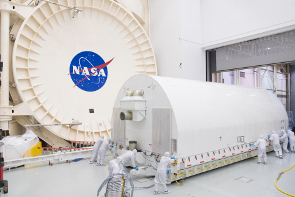 |
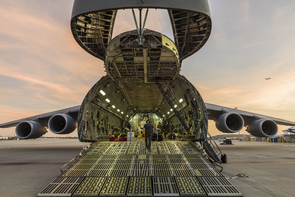 |
| The STARRS container to transport the James Webb Space Telescope. Credit: NASA/Chris Gunn | The cargo aircraft that transported the James Webb Space Telescope. Credit: NASA/Chris Gunn |
After arrival on 2 February, OTIS was driven from the airport to Northrop Grumman's Space Park facility, home to the other element of the observatory – the spacecraft bus and the tennis court sized, five-layer sunshield. This meant that, for the first time, the two halves of JWST were now present at the same location.
On 8 March, engineers removed OTIS from its shipping container, in preparation to the additional testing that it will undergo during the coming months. Meanwhile, the spacecraft element has begun a lengthy programme of environmental testing, subjecting it to the shock, vibrational, acoustic and thermal environments it will experience during its launch and operations.
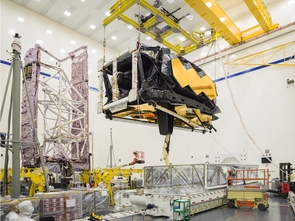 |
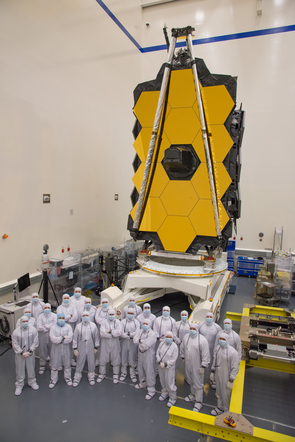 |
|
|
Ultimately, engineers will integrate the telescope and science instrument assembly with the spacecraft element in order to create the complete observatory for the first time.
This will be followed by another set of functional and environmental tests of the fully assembled observatory, which will verify that all components work together properly during what is called observatory-level testing.








